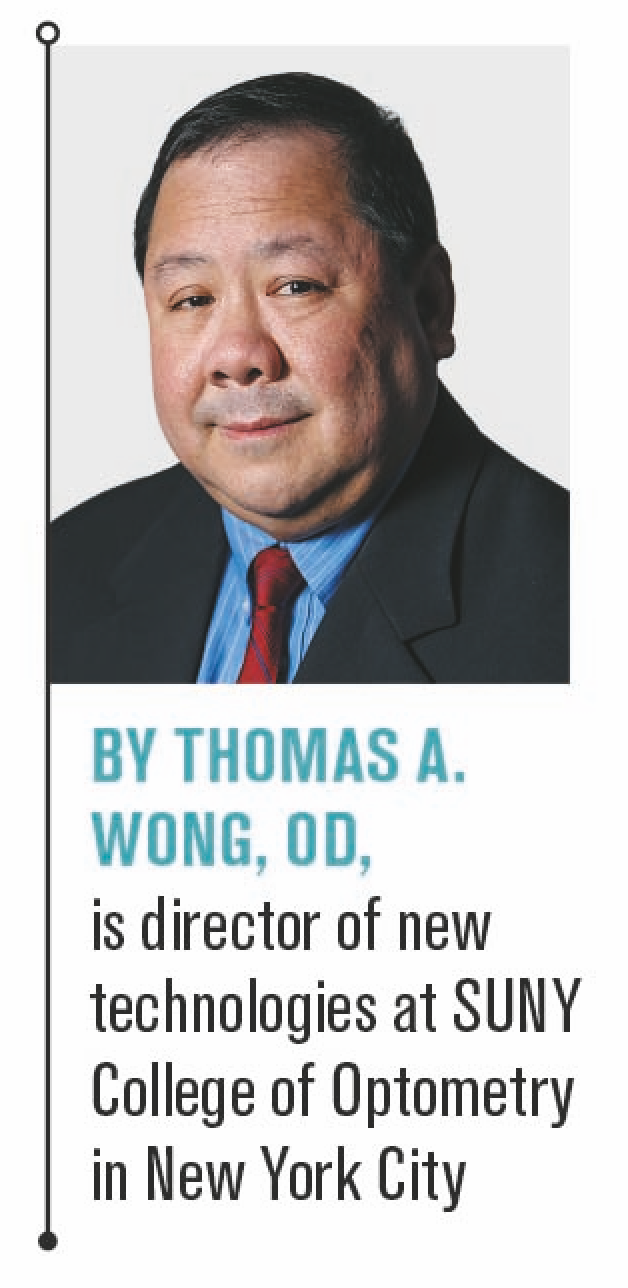Why ODs should embrace new technologies in eye care

As technologies continue to evolve, ODs sometimes struggle to adapt. Find out why embracing new technologies may be key in keeping one’s practice relevant in the 21st century.
As optometry has evolved into the realm of therapeutics, the use of new technologies has become integral to optometric care. These include wavefront aberrometry, optical coherence tomography (OCT), corneal topography, and fundus photography.1 In the 21st century, ODs and other healthcare providers must address the problems of privacy and data security.
Except for radiology, I have found that eyecare providers have used medical imaging more than perhaps any other specialty.
The Health Insurance Portability and Accountability Act (HIPAA) and privacy concerns occupy a great deal of time for ODs whether one is in private practice or works in academia, hospital, referral center, or an OD-MD practice.
As technology advances, many new diagnostic and therapeutic equipment utilizes cloud-based storage systems. It is part of optometrists’ professional responsibility to maintain patient privacy, prevent identity theft, and understand data security.
Our challenge as ODs is to be vigilant but not allow the fear of technology rule our lives. Technology should improve patient care and make our lives easier.
As an optometric educator, I am excited about using technology to improve education for students, residents, and practicing ODs. The movement of medical data storage to the cloud is based on growing costs and the exponential growth of data.2
Modern optometry
One of the keys to optometry joining primary health care in the United States was ODs becoming experienced in managing anterior and posterior segment eye disease, glaucoma, and other ocular diseases. Many ODs have heard Ron Melton, OD, FAAO, and Randall Thomas, OD, FAAO, at optometric continuing education conferences present clinical cases highlighting the proper use of steroids, anti-infectives, and anti-glaucoma medications to treat patients and formulate evidence-based differential diagnoses.3
ODs tend to be conservative by nature. The optometric oath and the motto primum non nocere (first, to do no harm) teaches ODs that patient welfare is the first concern, everything else then follows-such as privacy and security.4
Critics will argue that if we do not keep patient information and data secure, we cannot take care of patients first. ODs cannot let privacy and security fears prevent them from implementing new technologies-including cloud-based data storage.
Hybrid cloud storage
Hybrid cloud services have been driven by organizations not wanting to place the storage of medical images in the hands of vendors. The creation of hybrid cloud storage has resulted in a combination of on-site private and public cloud services.
These hybrid setups allow for organizations to maintain image storage onsite, such as vendor neutral archives (VNAs) that provide standard, organized archives of healthcare information from different picture archiving and communication systems (PACS).5,6
Data storage problems
The proliferation of data-including high-definition images-and video have necessitated storage devices with larger capacities. Some presume that local data storage constitutes less of a privacy and security risk because the data is within the immediate possession of the user and not in a less tangible cloud storage location.
HIPAA required the Secretary of the U.S. Health and Human Services (HHS) to develop regulations for protecting the privacy and security of certain health information.7 While complying to all HIPAA and other privacy standards is a difficult task, it is necessary in today’s value-based healthcare system as part of building trust in the OD-patient relationship.8
Future of cloud-based storage
Many medical information technology and privacy professionals believe that cloud-based storage provides superior security and organization for data storage.9 In optometry schools, clinics, and private practices, ODs need data storage options that allow for improved and integrated access to relevant patient information.
References:
1. Wong T, Steinway A, Wolke T. Eye care analytics: A new paradigm for primary eye care. Adv Ocular Surf. May/June 2017. Available at: https://collaborativeeye.com/articles/best-of-aoc/eye-care-analytics-a-new-paradigm-for-primary-eye-care/. Accessed 7/24/18.
2. Lee K. Medical imaging storage strategies aim for the cloud. TechTarget. Available at: https://searchhealthit.techtarget.com/feature/Medical-imaging-storage-strategies-aim-for-the-cloud. Accessed 7/3/18.
3. PCON Editorial Board. Melton and Thomas: Pioneers in ocular pharmacology education. Primary Care Optometry News. Available at: https://www.healio.com/optometry/therapeutics/news/print/primary-care-optometry-news/%7Bd34ba883-c4f7-434d-ae21-57a38e258601%7D/melton-and-thomas-pioneers-in-ocular-pharmacology-education. Accessed 7/3/18.
4. American Optometric Association. The Optometric Oath. Available at: https://www.aoa.org/about-the-aoa/ethics-and-values/the-optometric-oath. Accessed 7/3/18.
5. TechTarget. Vendor Neutral Archive (VNA). https://searchhealthit.techtarget.com/definition/Vendor-neutral-archive-VNA.
6. TechTarget. Vendor Neutral Archive (VNA). Available at: https://searchhealthit.techtarget.com/definition/Vendor-neutral-archive-VNA. Accessed 7/3/18.
7. U.S. Department of Health & Human Services. Summary of the HIPPA Security Rule. Available at: https://www.hhs.gov/hipaa/for-professionals/security/laws-regulations/index.html. Accessed 7/3/18.
8. New England Journal of Medicine (NEJM) Catalyst. What is Value-Based Healthcare? Available at: https://catalyst.nejm.org/what-is-value-based-healthcare/. Accessed 7/3/18.
9. Rai N. 10 benefits of moving Your EHR System to the Cloud. First Insight. Available at: https://www.first-insight.com/2018/05/07/benefits-moving-ehr-system-cloud/. Accessed 7/3/18.
Newsletter
Want more insights like this? Subscribe to Optometry Times and get clinical pearls and practice tips delivered straight to your inbox.